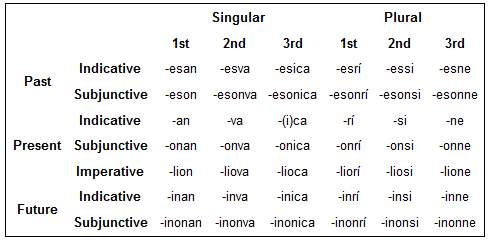Posted to Dreamwidth on 26 November 2024, backdated to 8 November 2021. Originally posted on Wordpress.
Introduction
Of the conlangs I created for the the story that eventually became The Book of Immortality, the dragon language was always the most fleshed out. It had to be, as it was used as a magic language and there were going to be passages written in it. I didn't have to expand the grammar much.
Also, this conlang didn't have a real name until earlier this year. Célis zisun means "mountain language", and it's one of the two dragon languages spoken in Greater Meitsung - primarily in East and West Rhécare. The other dragon language, mízha zisun "island language", is spoken on the island of Mízharos.
Phonology
The original dragon language contained /ɲ/, /ɸ/, /β/, /x/, /ɣ, and /ʍ/ in addition to every consonant listed in the table below. The number of fricatives was truly ridiculous, and it made no sense to have /ɸ β/ and /f v/ as well as /h/ and /x/. Those consonants weren't even allophones or anything - they were independent phonemes.
- Nasals: m (ɱ) n
- Stops: p t d k g
- Fricatives: f v θ ð s z ʃ ʒ h
- Approximants: l j w
- Rhotics: ɾ r
- Close: ɪ i u
- Mid: ɛ e o
- Open: a
Diphthongs are /iu/, /io/, /iɛ/, and /ia/. Syllable structure is CVF, where C is any consonant, V is any vowel, and F is /n/, /l/ or /s/. There are no words that start with vowels. Primary stress falls on the first syllable of a word, and secondary stress falls on following odd syllables.
Orthography
Since this conlang was first developed when I was still obsessed with Irish orthograph, there are some influences - namely, using <c>to represent /k/. That also immediately distinguishes it from the other languages of Meitsung.
| Letter | a | c | d | dh | e | é | f |
| Sound | /a/ | /k/ | /d/ | /ð/ | /ɛ/ | /e/ | /f/ |
| Letter | g | h | i | í | l | m | n |
| Sound | /g/ | /h/ | /ɪ/ | /i/ | /l/ | /m/ | /n/ |
| Letter | o | p | r | rh | s | sh | t |
| Sound | /o/ | /p/ | /ɾ/ | /r/ | /s/ | /ʃ/ | /t/ |
| Letter | th | u | v | w | y | z | zh |
| Sound | /θ/ | /u/ | /v/ | /w/ | /j/ | /z/ | /ð/ |
Nouns
Nouns (and adjectives) are marked for case, number, and definiteness; those markers are suffixed in the form case-number-definiteness with the exception of the vocative case, which is a prefix.
There are six cases: nominative, genitive, accusative, dative, instrumental, and vocative. For some strange reason, there were originally separate possessive and genitive cases. I'm genuinely not sure why.
- Nominative: -Ø
- Genitive: -in
- Accusative: -ul
- Dative: -eta
- Instrumental: -we
- Vocative: a-
Célis zisun has two numbers: singular and plural. The singular is unmarked, and the plural suffix is -le. Nouns are assumed to be indefinite by default. The definite ending is -(a)ne.
Why is there even a definite marker in this conlang? I'm not sure. Perhaps I was thinking of the Scandinavian languages at the time.
Pronouns
Pronouns are marked for case and number in the same way nouns are - not definiteness, because...that wouldn't make any sense.
- 1st singular: len
- 1st plural: riv
- 2nd informal singular: rhal
- 2nd informal plural: rhale
- 3rd singular: dhas
- 3rd plural: dhasle
Verbs
Verbs are marked for tense, mood, and person/number. There are three tenses: past, present, future, and three moods: indicative, subjunctive, and imperative. The 2nd person formal and informal are not distinguished in verbs.

Numerals
Célis zisun's number system is base ten. To form numbers in the teens, the word lemu "ten" is followed by a numeral. For example, lemu fari is 15. To form multiples of ten, a numeral (2, 3, 4, etc.) is followed by the plural form of ten. Heda lemule is 40 and pel lemule wora is 68.
Other Things
There is a copula, hen, that's much more irregular than other verbs. Adjectives follow nouns, and adverbs follow verbs. Word order is Subject-Object-Verb, and has been through all forms of this conlang.
Despite this conlang being more fleshed out than the previous two, it's still largely a naming language. Perhaps sometime in the future I'll come back and work on it more, but for now this is all there is.